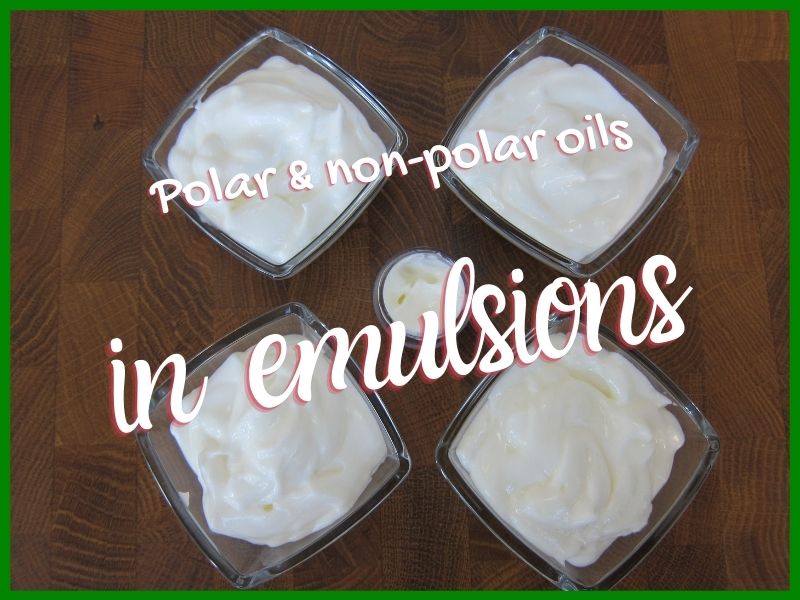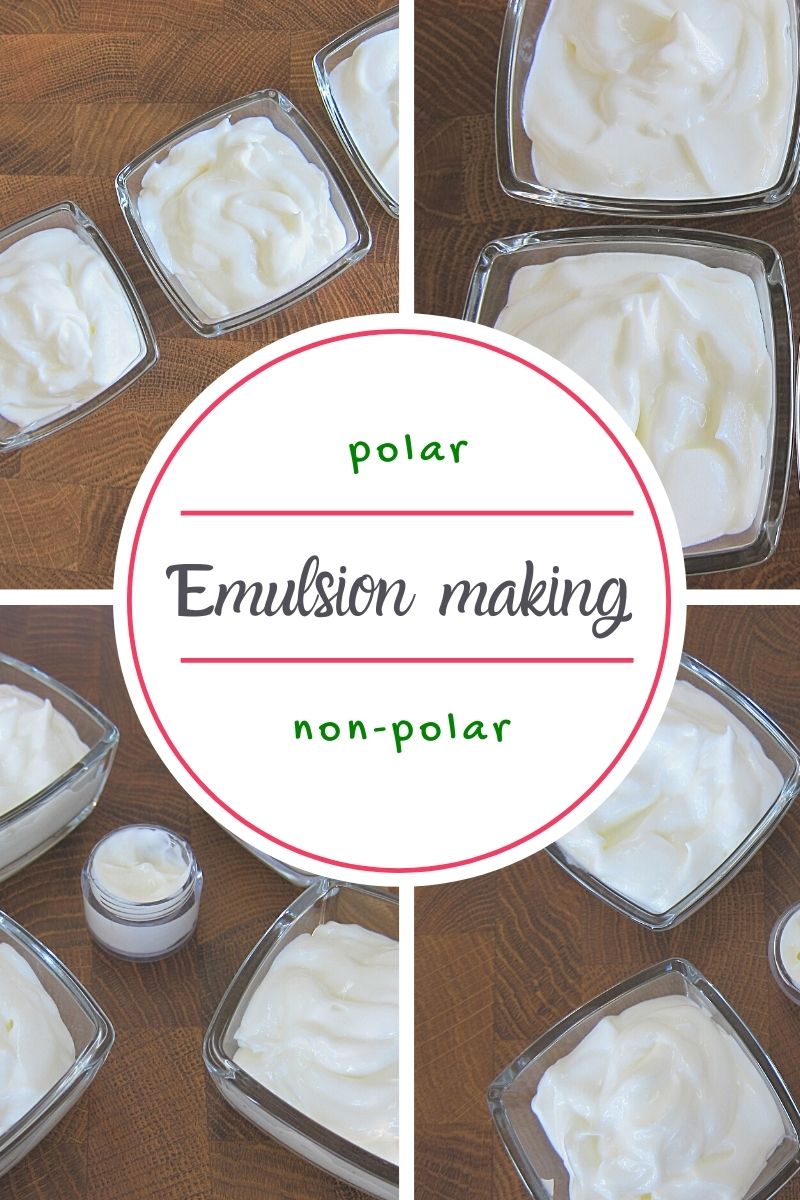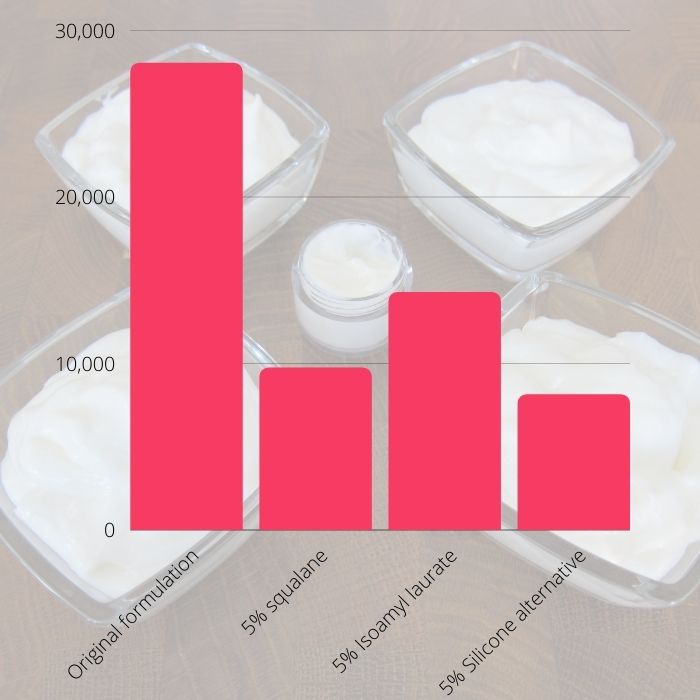
Donnerstag, 22. Juli 2021
Polar and non-polar oils in emulsion making
Lipids (natural, plant derived, semi-synthetic and synthetic) are a broad group of ingredients that are widely used in hair and skin care to impart emolliency, improve texture, impart occlusion and reduce the TEWL, protect the barrier etc.
The polarity and nature of the lipid usually has an essential impact on the:
- viscosity
- texture
- skin feel
- appearance
- shelf-life and even
- the stability of the finished product
not to mention the huge impact on the costs and final price.
No matter if you are making a KISS cleansing oil or a complicated anti-cellulite cream, choosing the right combination of lipids can make or break a formulation.
The importance of oil polarity is specifically fundamental when it comes to emulsion making and the preferences of the emulsifiers. You probably have read in some emulsifier descriptions and the information provided by the supplier that a certain emulsifier prefers polar oils or works better with a combination of polar and non-polar oils and have asked yourself: what the hell does this mean?
Or perhaps you have experienced that you have swapped a small part of your plant oil with another lipophilic ingredient and suddenly your beautiful thick cream became a runny liquid or your transparent gel-to-milk cleanser became an ugly turbid mess. Well, most of the time, the polarity of the lipid phase is the culprit in all these misfortunes and sudden changes.
Polar vs. non-polar oils
When you design a new formulation, you certainly consider several factors before choosing your lipids:
- availability
- price
- oxidation stability and shelf-life
- impact on the scent and color of the finished product
- compatibility with other ingredients
- biological function
- presence of unsaponifiables (for natural triglycerides)
The one thing that perhaps most of you ignore is the polarity of the lipid and its impact on the formulation.
Before you proceed
We have a 3 parts blog post about polar and non-polar oils, which oils are polar and which ones are less polar or non-polar and the impact on sample finished formulations and are not going to repeat the topic here. You can refer to these posts for more information (members only):
Polar and non-polar oils (part I)
Polar and non-polar oils (Part II)
Polar and non-polar oils: the difference in sample formulations
For this post, we studied the impact of the oil polarity on a KISS O/W formulation. This is the formulation we shared in the last post and video and we have used an emulsifier that works well with oils of varying polarities. This means varying the polarity of the oil will not completely destabilize and break the emulsion.
We then swapped 5% of the oil with other lipids of different polarities. All of the products remain stable but the viscosity, texture and the skin feel change with the varying oil polarities.
This is our basic formulation (watch the previous video and read the blog post for a complete formulation and procedure):
Formulation:
| Phase A | |
| Distilled or deionized water | to 100,0% |
| Na- PCA | 2,0% |
| Aquaxyl | 2,0% |
| L-Arginine | 0,3% |
| Natural chelator PA-3 | 0,1% |
| Phase B | |
| Tara gum | 0,1% |
| Solagum AX | 0,3% |
| Phase C | |
| Polyaquol 2W | 5,0% |
| Tigernut oil | 20,0% |
| Natural vit E | 0,3% |
| Phase D | |
| Patchouli oil | 0,2% |
| Ylang-ylang oil | 0,3% |
| Versatile preservative TBG | 1,0% |
| Lactic acid | to adjust the pH |
In the original formulation we have used 20% tigernut oil. For this experiments we replaced 5 % of the tigernut oil with:
2- 5% Olive squalane (less polar than the oil)
3- 5% isoamyl laurate (more polar than the oil)
4- 5% green-silicone alternative (more polar than the oil)
All the above 3 lipids, although different in polarity have a superior oxidation and thermal stability over triglycerides (even tiger nut oil with a low iodine value) and blending them with the triglyceride can improve the oxidation stability of the emulsion.
All of these lipids reduce the viscosity of the original emulsion but this reduction is not to a degree that causes instability.
Squalane makes the skin feel "richer" compared to the original formulation. It doesn't feel heavy on skin but it feels rich and more pampering.
The higher polar lipids, isoamyl laurate and the green silicone alternative have a lighter skin feel and absorb faster than the qualane or the original formulation. Our team liked the alternative with 5% green-silicone alternative the best.
The viscosities:
The impact of the stirrer
Since some of you have asked about the type of stirrer blade we use, we made the formulation with the green-silicone alternative twice. The formulation is exactly the same. The procedure is almost the same except for the stirring during cool down and after emulsification. In one sample we used a propeller blade and in the other we used the anchor blade, The stability is the same. The viscosity is almost the same (an ignorable difference) but the texture is remarkably different. The one with teh anchor blade has a more fluffy appearance.
You can watch the video here



